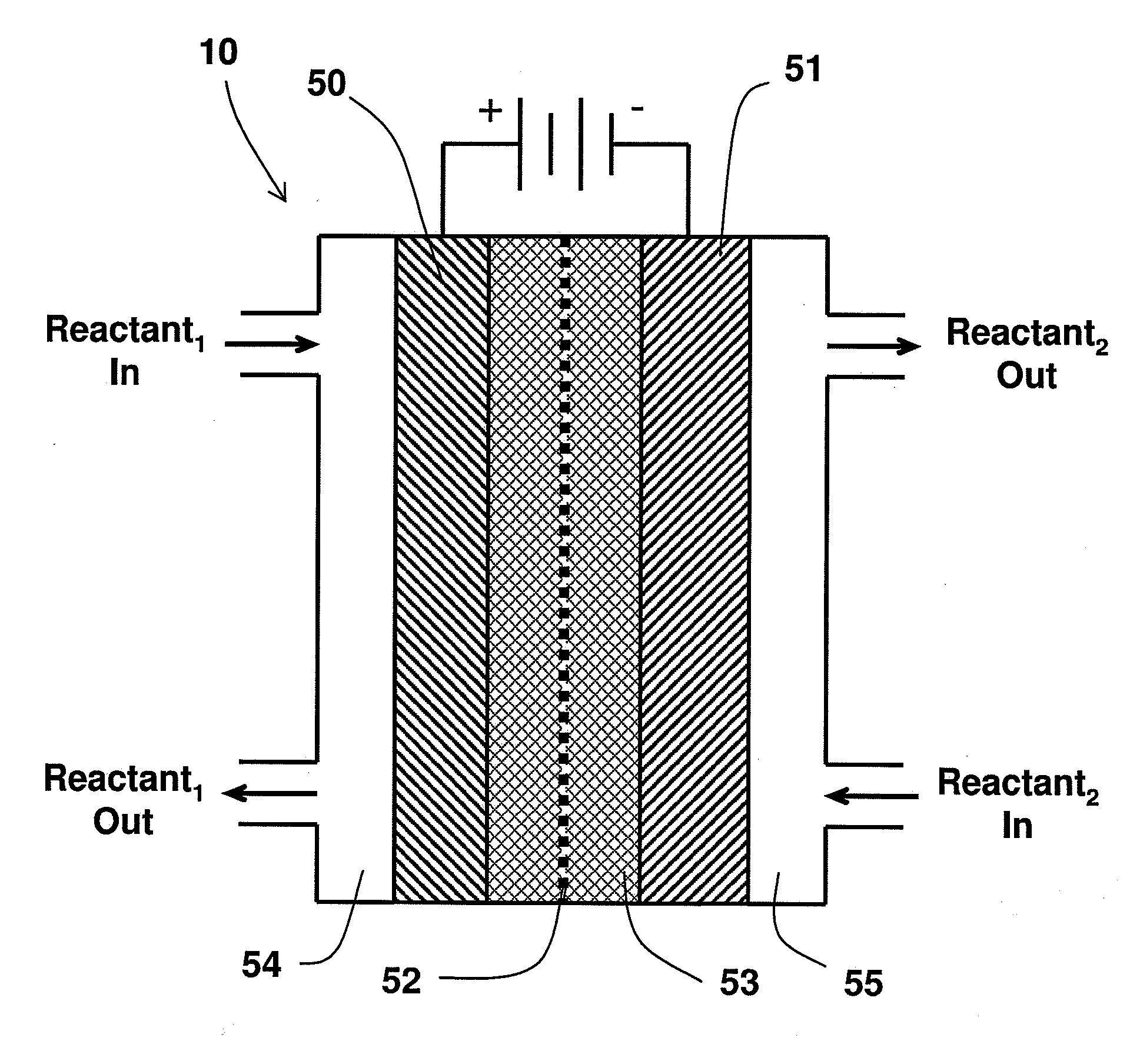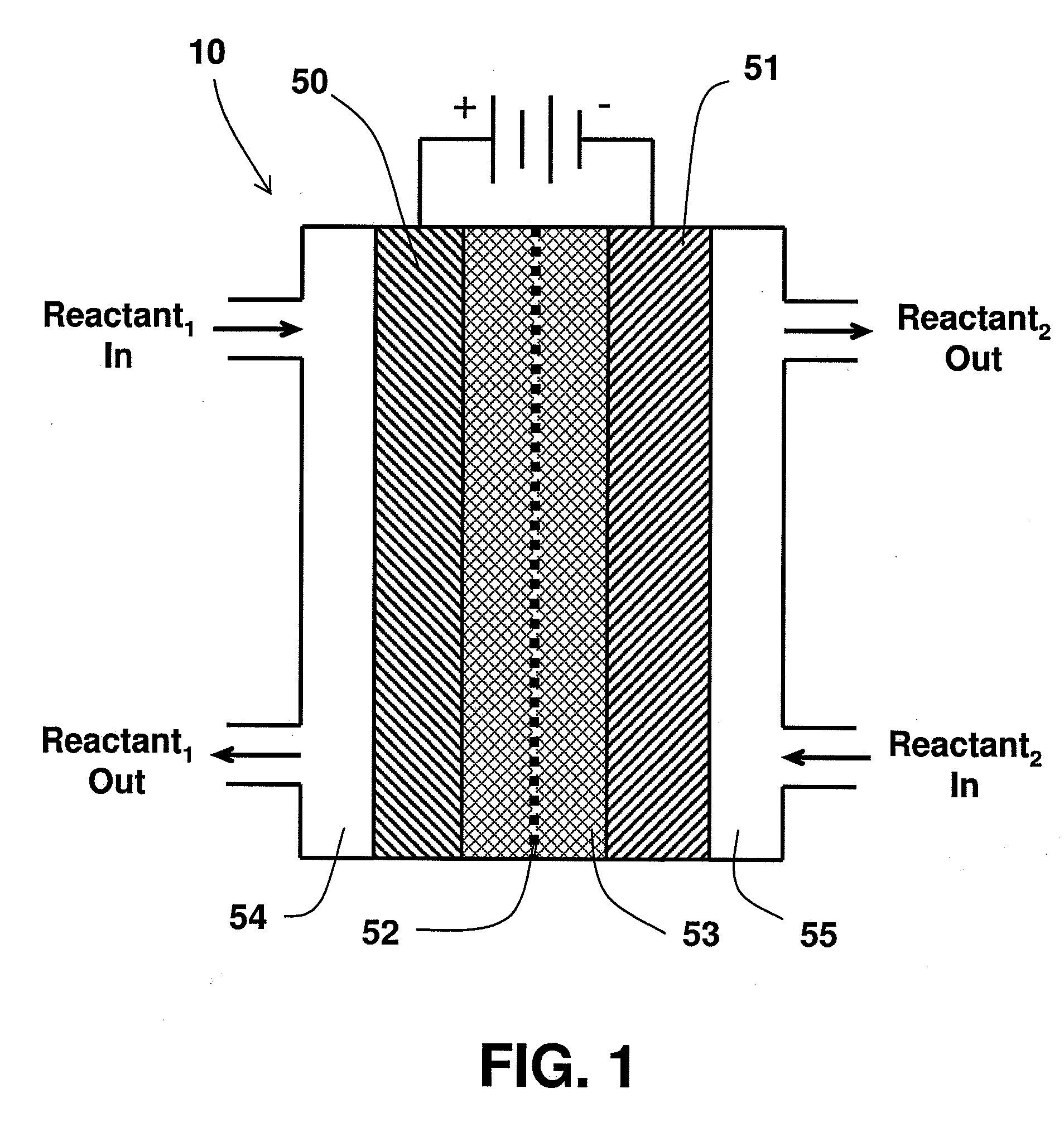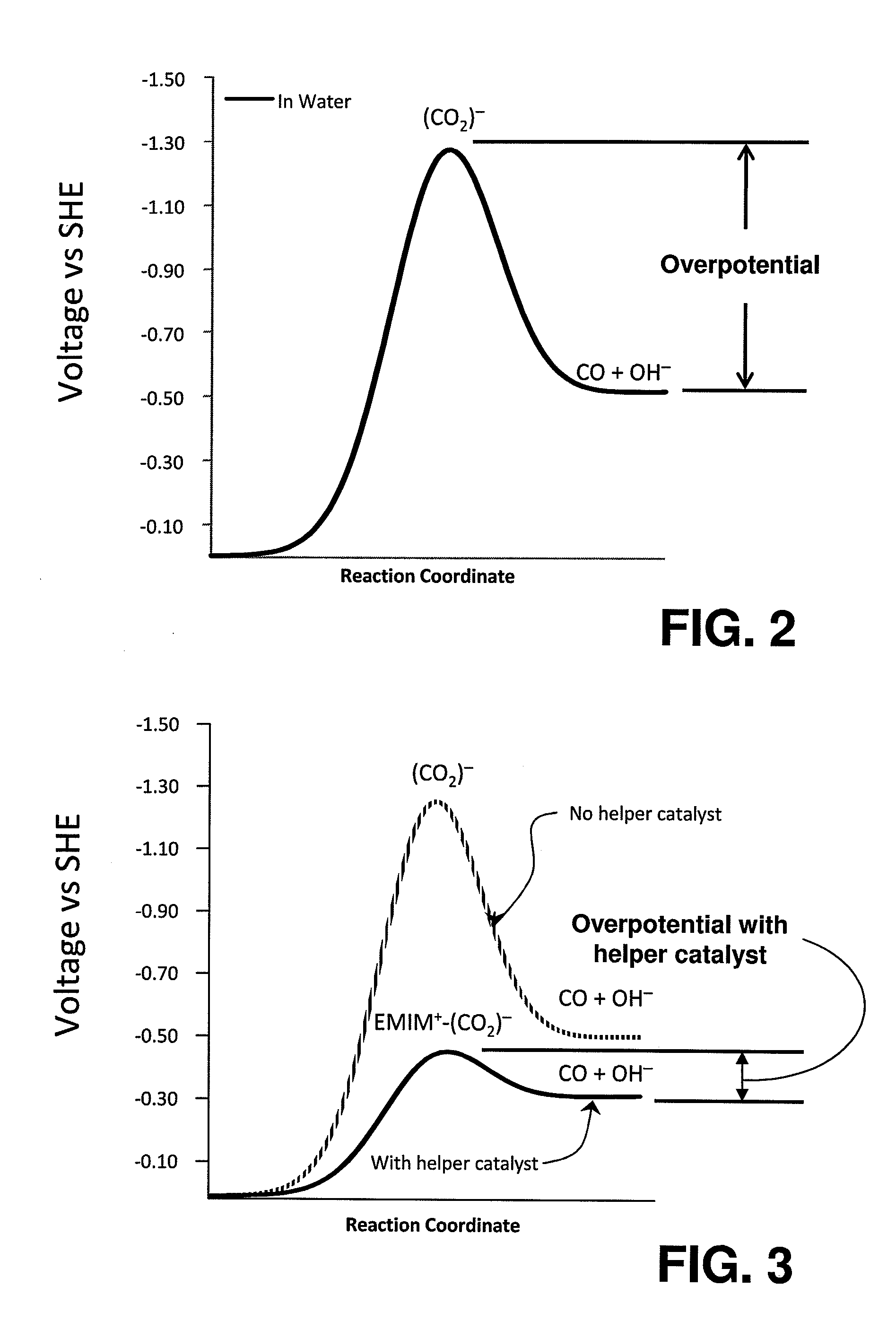Novel Catalyst Mixtures
a catalyst and mixture technology, applied in the field of electrochemical cells and electrochemistry, can solve the problems of preventing efficient conversion of carbon dioxide into energy-bearing products, lack of catalysts with sufficient activity at low overpotentials and high electron conversion efficiency, and low electron conversion efficiency, so as to suppress undesired side reactions and increase the overpotential of undesired reactions. , the effect of high power
- Summary
- Abstract
- Description
- Claims
- Application Information
AI Technical Summary
Benefits of technology
Problems solved by technology
Method used
Image
Examples
specific example 1
Use of an Active Element, Helper Catalyst Mixture Including Palladium and Choline Iodide to Lower the Overpotential for Electrochemical Conversion of CO2 in Water and Suppress Hydrogen Formation
[0128]This example is to demonstrate that the present invention can be practiced using palladium as an active element and choline iodide as a Helper Catalyst.
[0129]The experiment used the cell and procedures described in the first test above, with the following exceptions: i) a 10.3% by weight of a Helper Catalyst, choline iodide, in water solution was substituted for the 1-ethyl-3-methylimidazolium tetrafluoroborate and ii) a 0.25 cm2 Pd foil purchased from Alfa Aesar of Ward Hill, Mass., USA, was substituted for the gold plug and platinum black on the cathode, and a silver / silver chloride reference was used.
[0130]The cell contained 52 mg of palladium and 103 mg of helper catalyst, so the overall catalyst mixture contained 66% of helper catalyst.
[0131]FIG. 11 shows a CV taken under these con...
specific example 2
Use of an Active Element, Helper Catalyst Mixture that Includes Palladium and Choline Chloride to Lower the Overpotential for Electrochemical Conversion of CO2 to Formic Acid and Suppress Hydrogen Formation
[0133]The next example is to demonstrate that the present invention can be practiced using a second Helper Catalyst, choline chloride.
[0134]The experiment used the cell and procedures in Example 1, with the following exception: a 6.5% by weight choline chloride in water solution was substituted for the choline iodide solution.
[0135]The cell contained 52 mg of palladium and 65 mg of Helper Catalyst, so the overall catalyst mixture contained 51% of Helper Catalyst. FIG. 12 shows a comparison of the cyclic voltammetry for (i) a blank scan where the water-choline chloride mixture was sparged with argon and (ii) a scan where the water-choline chloride mixture was sparged with CO2. Notice the negative going peaks starting at about −0.6. This shows that CO2 is being reduced at −0.6 V. By...
specific example 3
Use of an Active Element, Helper Catalyst Mixture that Includes Nickel and Choline Chloride to Lower the Overpotential for Electrochemical Conversion of CO2 to CO and Suppress Hydrogen Formation
[0140]This example is to demonstrate that the present invention can be practiced using a second metal, namely, nickel.
[0141]The experiment used the cell and procedures in Example 2, with the following exception: a nickel foil from Alfa Aesar was substituted for the palladium foil.
[0142]FIG. 13 shows a comparison of the cyclic voltammetry for a blank scan where i) the water-choline chloride mixture was sparged with argon and ii) a scan where the water-choline chloride mixture was sparged with CO2. Notice the negative going peaks starting at about −0.6. This shows that CO2 is being reduced at −0.6 V. By comparison, the data in Table 2 indicates that a voltage more negative than −1.48 V is needed to convert CO2 on nickel in the absence of the Helper Catalyst. Thus, the Helper Catalyst has lowere...
PUM
| Property | Measurement | Unit |
|---|---|---|
| voltage | aaaaa | aaaaa |
Abstract
Description
Claims
Application Information
 Login to View More
Login to View More - R&D
- Intellectual Property
- Life Sciences
- Materials
- Tech Scout
- Unparalleled Data Quality
- Higher Quality Content
- 60% Fewer Hallucinations
Browse by: Latest US Patents, China's latest patents, Technical Efficacy Thesaurus, Application Domain, Technology Topic, Popular Technical Reports.
© 2025 PatSnap. All rights reserved.Legal|Privacy policy|Modern Slavery Act Transparency Statement|Sitemap|About US| Contact US: help@patsnap.com



